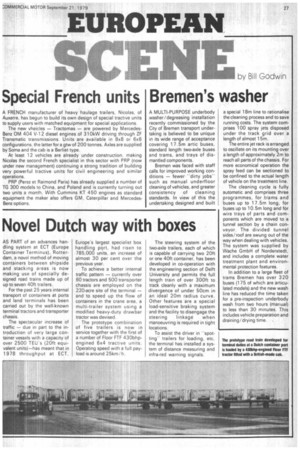Novel Dutch way with boxes
Page 29

If you've noticed an error in this article please click here to report it so we can fix it.
AS PART of an advances handling system at ECT (Europe Container Terminus), Rotterdam, a novel method of moving containers between shipside and stacking areas is now making use of specially designed road trains made up of up to seven 40ft trailers, For the past 25 years internal transport of containers at ports and land terminals has been carried out by the well-known terminal tractors and transporter chassis.
The spectacular increase of traffic — due in part to the introduction of very large container vessels with a capacity of over 2500 TEU's (20ft equivalent units)—has meant that in 1978 throughput at ECT, Europe's largest specialist box handling port, had risen to 785,000 units, an increase of almost 30 per cent over the previous year.
To achieve a better internal traffic pattern — currently over 60 tractors and 500 transporter chassis are employed on the 220-acre site of the terminal — and to speed up the flow of containers in the crane area, a multi-trailer system using a modified heavy-duty drawbar tractor was devised.
The prototype combination of five trailers is now in service together with the first of a number of Floor FIE 430bhpengined 6x4 tractive units. Operating speed with a full payload is around 25km/h. The steering system of the two-axle trailers, each of which is capable of carrying two 20ft or one 40ft container, has been developed in co-operation with the engineering section of Delft University and permits the full length train of over 300ft to track cleanly with a maximum divergence of under 50cm in an ideal 20m radius curve. Other features are a special load-sensitive braking system and the facility to disengage the steering linkage when manoeuvring is required in tight locations.
To assist the driver in "spotting" trailers for loading, etc, the terminal has installed a system of distance measuring and infra-red warning signals.












































































































































